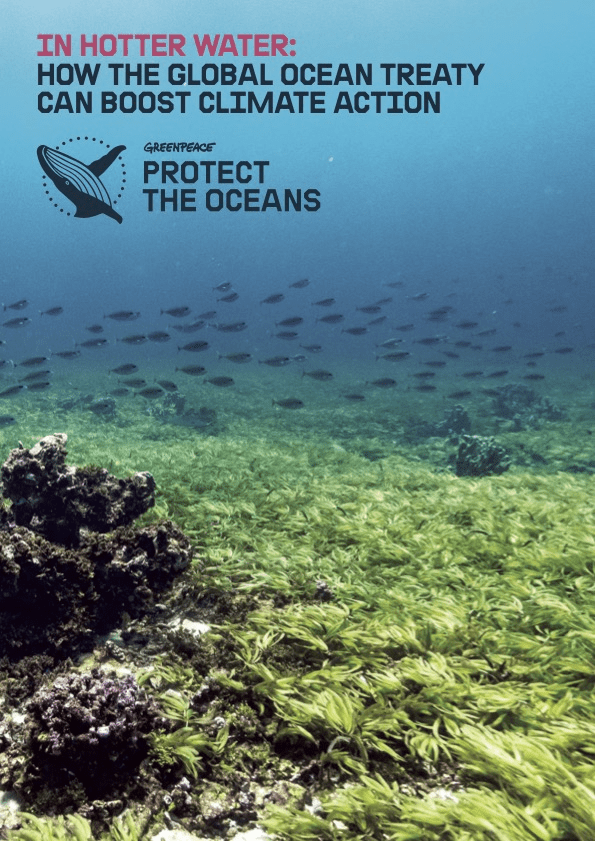How the Global Ocean Treaty can boost climate action
In December 2019, Greenpeace International released 30×30 In Hot Water: The climate crisis and the urgent need for ocean protection. This makes the scientific case for creating a network of marine sanctuaries covering at least 30% of the world’s ocean, both to increase marine life’s resilience to climate change and to help mitigate its effect by protecting natural blue carbon stores.
Since In Hot Water was released, new research has shown a possible weakening of the ocean’s ability to sequester and store carbon, while climate impacts on the ocean and coastal communities have worsened.
In the meantime, governments have been dragging their feet on measures to effectively protect the ocean. To this day, less than 1% of the high seas – the largest habitat on Earth, comprising 64% of the world’s ocean – is fully or highly protected from human activities. While marine protected areas (MPAs) can be a powerful tool to help restore biodiversity and provide climate benefits, they will only succeed if they are well designed and properly enforced. A recent study of the world’s largest 100 MPAs, representing close to 90% of reported global MPA coverage, revealed that 25% of the assessed MPA coverage is not implemented, and that 33% is incompatible with conservation objectives. There are two factors underlying this: the lack of regulations or management, and the insufficient level of protection in some MPAs where destructive activities are still allowed to take place.
However, the picture isn’t entirely bleak. Political momentum for ocean protection has been growing and some major milestones have been reached in the last couple of years, triggering a wave of hope.
In December 2022, 196 members participating in the Conference of the Parties to the Convention on Biological Diversity in Montreal, Canada, agreed on the Kunming-Montreal Global Biodiversity Framework. This included Target 3, also called “30×30”, committing to the protection of at least 30% of land and sea by 2030. While governments need to ensure the necessary level of funding and ambition to reach this target, they must also define networks of fully or highly protected MPAs to implement the target by the 2030 deadline.
In March 2023, after decades of negotiations, the UN agreed on a new Global Ocean Treaty, officially known as the Agreement under the United Nations Convention on the Law of the Sea on the conservation and sustainable use of marine biological diversity of areas beyond national jurisdiction (BBNJ Agreement). Upon entering into force, it will be the first legally binding treaty targeted specifically at conserving marine life within the high seas, and a powerful tool that governments can use to help deliver the 30×30 target by creating vast ocean sanctuaries free from destructive human activities on the high seas.
The International Tribunal for Law of the Sea Advisory Opinion recognises that the Global Ocean Treaty provides tools for governments to fulfil their duty to address the interconnected crises of climate and ocean, which continue to worsen every day. With the 2030 deadline fast approaching, governments must tackle the climate crisis as a matter of utmost urgency. They need to set ambitious emission-reduction targets, transition to renewable energy, and ensure compliance with international climate agreements like the Paris Agreement to effectively tackle climate change. They must protect and restore natural stores of carbon in the ocean and the ecosystem process that maintains them. They must also start working on MPA proposals to be presented at the first BBNJ Conference of the Parties, or Ocean COP, and listen to over a million people around the world who are calling on them to urgently ratify the Global Ocean Treaty.
Download the report:
In Hotter Water: How the Global Ocean Treaty can boost climate action
Source link
Greenpeace International www.greenpeace.org

